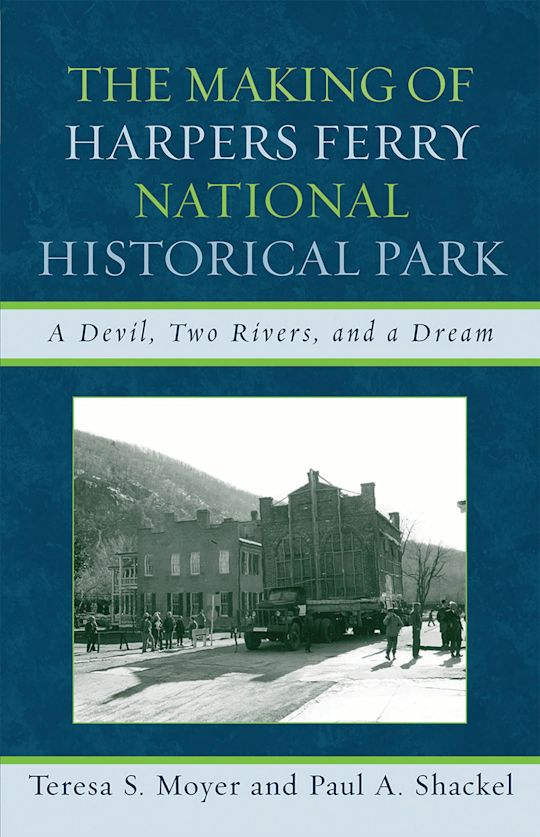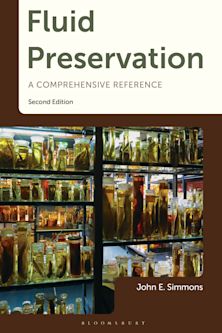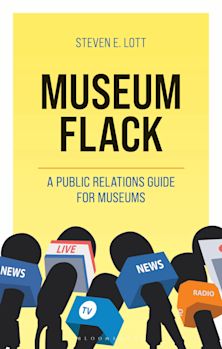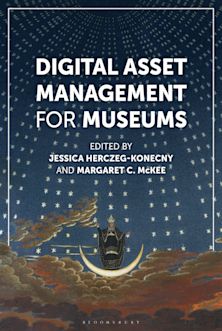- Home
- ACADEMIC
- Museum Studies
- The Making of Harpers Ferry National Historical Park
The Making of Harpers Ferry National Historical Park
A Devil, Two Rivers, and a Dream
The Making of Harpers Ferry National Historical Park
A Devil, Two Rivers, and a Dream
You must sign in to add this item to your wishlist. Please sign in or create an account
Description
Harpers Ferry National Historical Park is most widely known today for the attempted slave revolt led by John Brown in 1859, the nucleus for the interpretation of the current national park. Here, Moyer and Shackel tell the behind-the-scenes story of how this event was chosen and preserved for commemoration, providing lessons for federal, state, local and non-profit organizations who continually struggle over the dilemma about which past to present to the public. Professional and non-professional audiences alike will benefit from their important insights into how federal agencies interpret the past, and in turn shape public memory.
Table of Contents
2 Preface
3 Harpers Ferry and Its Place in History
4 Remembering Harpers Ferry
5 The Local Campaign for a National Monument
6 Local Residents and the National Park Service
7 Harper House and the Women's Clubs of West Virginia
8 John Brown: Devil, Hero, Terrorist, and Abolitionist
9 Civil War Commemoration and Preservation
10 Industry, Archaeology, and a Working-Class History
11 Making African-American History Prominent at Harpers Ferry
12 Time Freezing: Harpers Ferry and Its Place in Time
13 Lessons Learned - Or Not - at Harpers Ferry
Product details
| Published | Jul 27 2007 |
|---|---|
| Format | Ebook (Epub & Mobi) |
| Edition | 1st |
| Extent | 264 |
| ISBN | 9780759113725 |
| Imprint | Rowman & Littlefield Publishers |
| Series | American Association for State and Local History |
| Publisher | Bloomsbury Publishing |
About the contributors
Reviews
-
One of the finest park histories that I've read-thoughtful, original, fluidly written, meticulously researched. By juxtaposing three intertwined stories-history, archaeology, and interpretation-Moyer and Shackel explain how the quest for historical authenticity can give way to the creation of a fantastical parkscape. A superb case study on how 'history makes itself' and a model for future park histories.
R. Bruce Craig, former executive director, National Coalition for History
-
More than just a meticulously researched account of the creation of an iconic American park, the authors present a human story of contested meanings, good intentions, and power politics. Why did the National Park Service demolish most of the 19th-century architecture in Harpers Ferry? Who claimed that John Brown was a lunatic? And why was one of the first of the park's historians relegated to cleaning restrooms? Read on.
Adrian Praetzellis, professor of anthropology, Sonoma State University; author of Dug to Death
-
This is the kind of thoughtful and provoking study of shifting policy and practice that every historic site needs. Moyer and Shackel have probed beneath the surface to analyze the changing treatment and presentation over time of a complex historic place at the confluence of two majestic rivers where events occurred that propelled Americans toward the Civil War.
Richard West Sellars, author of Preserving Nature in the National Parks: A History
-
How is history preserved, presented, and commemorated? In this book, Moyer and Shackel give us rare insight into the process of how a national park gets made. In the process we learn how the conflicting goals and differing perceptions of various stakeholders can cause the past to be changed over time. This is a superb example of multidisciplinary research at its finest, told with conviction and feeling. It's destined to become a standard text in classroom and field, and hopefully also in the halls of power. Those of us concerned about our vanishing cultural heritage need more books like this one.
Charles E. Orser Jr., Vanderbilt University
-
Teresa S. Moyer and Paul A. Shackel help us analyze the historical reality of Harpers Ferry National Historical Park through their careful examination of the National Park Service's restoration and interpretation of this historically important place. In so doing, they emphasize two topics shared by most historic sites: restoration philosophy and multiple histories.
Dwight Pitcaithley
-
Harpers Ferry is, to my mind, one of the most compelling historic sites in the nation. There are so many histories living in layer after layer of this place. Teresa S. Moyer and Paul A. Shackel excavate them in all their exquisite complexity, offering a model biography of a historic site.
Edward T. Linenthal, editor, Journal of American History


































